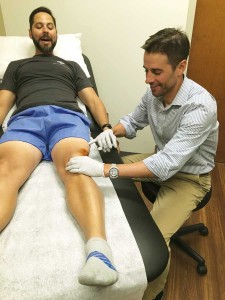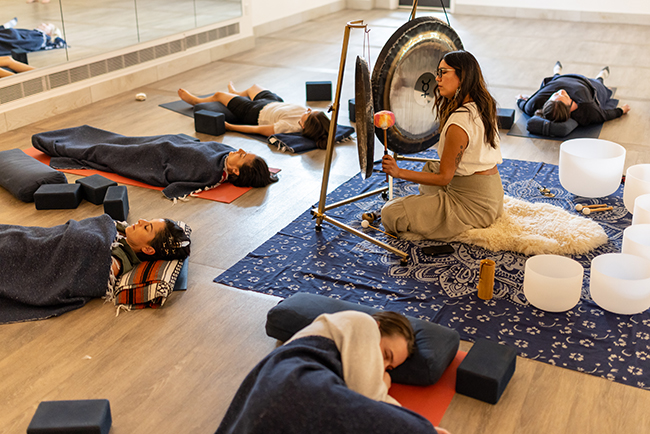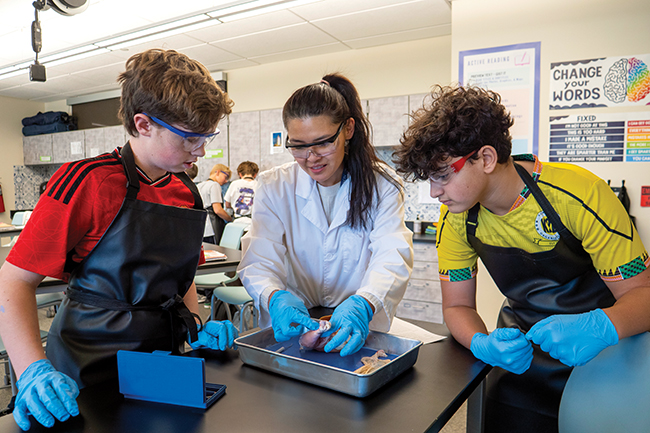Acute vs. Chronic Inflammation
10 Dec 2015
Hot and Bothered
By Shannon Burgert Insidious. That’s the word Jason Glowney, M.D., uses to describe chronic inflammation, and it’s well-deserved. Inflammation is linked to myriad illnesses, such as rheumatoid arthritis, asthma and cancer. But Glowney, medical director and assistant professor for the University of Colorado’s Sports Medicine and Performance Center in Boulder, says that inflammation gets a bad rap. That’s because inflammation in an acute situation—like a sprained ankle or a cut—is the first stage of healing. The purpose of inflammation is to remove damaged cells, irritants and pathogens from affected areas. Cells release chemical mediators, which stimulate the inflammatory response. Arterioles (small blood vessels that lead from arteries to capillaries) dilate to increase blood flow, and capillaries become more permeable, allowing blood proteins and fluid to maneuver into spaces between cells. White blood cells step in to destroy foreign bodies. All of this creates redness, swelling and heat. The process can irritate nerves and result in the pain that’s common with inflammation, says Daniel P. Feldman, M.D., an interventional pain specialist in Lafayette. Inflammation can also arise with conditions like acute bronchitis, a sore throat and acute dermatitis. But halting it by applying ice or taking nonsteroidal anti-inflammatory drugs (NSAIDs) like ibuprofen and naproxen can do as much harm as good, he says, because if you stop the inflammatory process you halt the process of healing. (NSAIDs also can harm the gut with long-term use.)
Performance Center. (photo courtesy Jason Glowney)
When Inflammation Sticks Around
But what about that sneaky word, “insidious”? With chronic inflammation, the body turns on itself, destroying and remolding tissue. Chronic inflammation can develop from persistent acute inflammation, but it can also emerge without a previous acute episode. One well-known chemical mediator released during inflammation is histamine, which is triggered by allergic reactions to substances like pollens. Antihistamines prevent the release of histamine from some cells to block the allergic reaction. There are hundreds of autoimmune diseases, including rheumatoid arthritis, celiac disease, Crohn’s disease and lupus, and almost all of them have inflammation as a sign. One difficulty in treating such diseases is that medicines that reduce inflammation can also impair the immune system. Inflammation has also been implicated in diabetes, Alzheimer’s and heart disease. Some researchers believe that in the latter, as fats build up in the walls of coronary arteries, the body may identify the affected arteries as injured and provoke an inflammatory response. That could bring on a blood clot, potentially leading to a heart attack or stroke. Feldman estimates that 80 to 90 percent of his patients arrive at his practice in a state of chronic pain associated with sports injuries, spinal issues, multiple surgeries or disease. Inflammation is inherent in all of them. For people who have chronic joint pain, he says, “every action they’re doing is releasing all of these inflammatory mediators into the joint, which is chronically affecting the skin, the bone and the nerves that are in there, and causing pain. A lot of time the cycle just can never calm down; the patient can never heal and move on.”Inflammation and Diet
Lifestyle plays a major role in increasing or thwarting inflammation. Some offenders can be put simply: Excessive stress, lack of sleep and obesity generate inflammatory chemicals. Smoking is just plain sinister. Diet is also a significant factor. “Now we know that what you put in your mouth has a big deal to do with body inflammation,” Glowney says. Perhaps most important is what fats we consume. The balance of omega-6 to omega-3 fatty acids should be four to one, he says (and some experts believe it should be closer to even), but for most people the ratio of omega-6s is far higher. It can even reach 30 to 1 for those who eat a lot of foods fried in vegetable oils. A good first step to balance the omega-6-to-omega-3 ratio is to cut back on polyunsaturated vegetable oils like corn, sunflower, safflower, soybean and cottonseed oils. Saturated fats and hydrogenated fats should get the boot. Eat foods high in omega-3s, like walnuts, flax seeds, fortified eggs, and cold-water fish such as salmon, mackerel and herring. It helps to cook at home, since restaurant and packaged foods tend to contain unhealthy fats. And—probably not a surprise—ditch refined flours and sugars. They can convert omega-6 fats to inflammatory chemicals. Finally, Glowney adds, animal products that have been treated with hormones and antibiotics are also harmful, as they impact the gut in a way that increases inflammation. Some research suggests that depletion of certain vitamins, like A, B6, C, D, E and K, may contribute to chronic inflammation. And some herbs are believed to have anti-inflammatory properties, including turmeric, ginger and cannabis. Tart cherries are also getting a lot of press recently for their ability to curb inflammation.One Anti-inflammatory Diet To read Andrew Weil, M.D.’s, comments on healthy and unhealthy fats, and to see his recommended food pyramid, visit www.drweil.com/drw/u/ART02012/anti-inflammatory-diet.
Inflammation and Exercise
The relationship between exercise and inflammation is interesting. Glowney explains that exercise that involves eccentric muscle work, in which muscle fibers lengthen as they contract, can provoke inflammation. Eccentric contractions are involved in walking down stairs, lowering weights, and the downward motion of pull-ups and push-ups. It’s usually subtle, Glowney says, but if someone runs a marathon hard, it can show up in inflammatory markers. Feldman and Glowney both say that “super athletes” who routinely engage in ultra events—frequent ultramarathons or Ironman triathlons, for instance—usually fall into a chronic state of inflammation. At that level, Glowney says, “you’re actually on par with someone who’s sedentary in terms of your risk of death.” Glowney emphasizes that moderate exercise, which boosts immunity, is your best ally in combating inflammation. But if you sprain your ankle while you’re out on your next low-intensity run, go light on the ice.Shannon Burgert, Ph.D., writes regularly about health and science for Boulder Magazine. She teaches fifth grade at Fireside Elementary School in Louisville.












